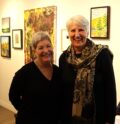Commentary
Youth plotting to bring change to their communities
October 12, 2017
By Nate Smelle
Bancroft’s Mayor Paul Jenkins often begins each council meeting by sharing a few words of wisdom from author Doug Griffiths’s book, 13 Ways to Kill Your Community. Using reverse psychology Griffiths shines a light on 13 things a community must do to foster long-term economic prosperity, and a healthy and enjoyable quality of life for all who live there. One of the 13 ways a community can destroy itself, he says, is by not engaging with youth to seek out and implement their ideas. Recognizing a limited pool of opportunities for the next generation of Hastings County to get involved in shaping their communities, a small team of community-minded youth recently decided to take charge of their future by organizing the area’s first ever Youth Summit. Held at the recreation centre in Tyendinaga Township, the daylong summit gave 150-plus youth between the ages of 14 and 25 a rare chance to have their voices heard and build their social networks face-to-face, instead of just online. The underlying message: everyone must take responsibility for the future of their community, country and the world where they live.
Asked by organizers to facilitate a series of discussions focused on the environment, I had the privilege of listening to these future leaders share their concerns and prospective solutions to some very serious problems. Spending the afternoon with these young community activists proved to be an extremely enlightening and inspirational experience. Less than 10 minutes into the first discussion, I was both delighted, and disturbed, to discover that the level of comprehension regarding environmental issues exceeded that of many elected officials I had interviewed in the past.
Getting to the root of the problem right away, a Grade 12 student from the Madoc area pointed a finger at the current economic system stating, “it’s not sustainable over the long term because it is based on non-renewable resources like fossil fuels.” Another member of the group expressed her frustration with the federal government for continuing to give the oil industry billions of dollars each year in subsidies, while providing very few financial incentives for environmentally friendly businesses.
“We shouldn’t be paying these companies to pollute,” she said. “We should be funding green businesses instead. Corporations and governments need to be held accountable when they harm people and communities by abusing the environment, not rewarded.”
Each of the groups raised different issues, however, a few issues popped up repeatedly. Climate change, diminishing water and air quality, waste and the loss of farmland and forests due to urban sprawl were among some of their biggest concerns. It was also brought up on numerous occasions how local farmers’ markets, foodscaping and community gardens play an essential role in reducing greenhouse gas emissions, eliminating waste, improving food security and alleviating poverty.
Before the summit ended, the youth were asked to reassemble with the focus group they felt compelled to join. They were then asked to identify the most pressing issue in their community and what would be the best way to tackle it. Once the room had settled, 13 ecologically concerned youth had returned to the circle to continue moving the conversation forward. Scanning the wall where the ideas from each of the environmental focus groups had been posted, the young activists determined that waste, in all its forms, was the environmental issue causing the most damage to their communities. Developing an action plan on the spot, they agreed that a month-long campaign of activism would be the best way to raise awareness of environmental issues and begin implementing solutions. This campaign would include: a cleanup of industrial waste and all other types of litter in their communities, making improvements to local recycling programs, hosting information tables at local farmers’ markets and community events, building community gardens, and, petitioning all levels of government to eliminate wasteful practices and ban disposable products wherever possible.
It is worth noting that one of the main reasons the group decided to focus on waste was because they consider the manufacturing of disposable products -— plastic bottles, straws, utensils, cups, etc. — to be a foolish use of precious energy and resources.
“We’ve become a disposable society,” said Mike, one of the youth who chose the environment as his primary concern.
“If we’re lucky, all that plastic trash ends up in our landfills. But, even if it does, it eventually makes its way into our water. We can’t continue doing the things we’ve done in the past just because it’s convenient. Everyone needs to slow down and think about what they’re going to do before they do it.”
Acknowledging the massive amount of work to be done, and that all the issues they had discussed that day were interconnected, it had become obvious to the group that the only way to build a sustainable future was through co-operation. Youth involvement, co-operation, civic responsibility, an active concern for water quality, local shopping and the community aesthetic — the Youth Summit dished out experiential teachings on each of Griffiths’s 13 Ways to Kill Your Community — important lessons for community members of all ages.
Living for the most part without the distractions of the adult world, youth have much insight to offer us into what truly matters in life. Paying attention to the perspectives of the next generation is more than just a promising idea, it is a fundamental element in the creation of a sustainable future. Every interaction we have with one another provides us with a new opportunity to look at ourselves and observe the community we are a part of from a unique perspective. The more we share the more we grow. The more we grow, the more we learn to appreciate the value of becoming a compassionately engaged member of society.
For the sake of community improvement, I hope to see a healthy representation of youth from the Bancroft area in the audience when Doug Griffiths comes to the Village Playhouse on Oct. 19.

















